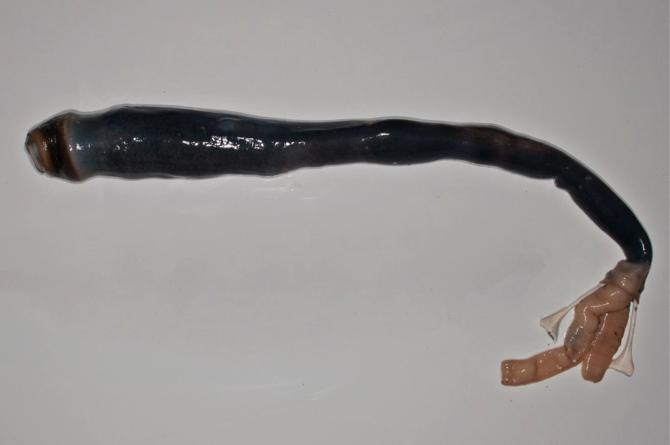Everyone knows that social media has changed the world, revolutionizing the ways that many of us communicate with friends and family, get news, meet people, entertain ourselves, and shop. However, it is not always obvious that social media can also play a big role in science.
A few years ago, a student in one of Ocean Genome Legacy’s (OGL) many international research collaborations shared a YouTube video with her supervisors. The video, produced by a Philippine weekly news magazine, showed Filipino people consuming long worm-like wood-eating clams called shipworms. This in itself was not major news. Although a bit off-putting to most, the squiggly creatures are a delicacy in many areas of the South Pacific. The big news was that one of the shipworm species being enthusiastically gobbled in the video turned out to be Kuphus polythalamia, an extremely rare behemoth that reaches up to five feet in length and lives in shell-like tubes resembling elephant tusks. Although known for more than 200 years from its tusk-like tubes and from fossils, living specimens of this unique species had never been located or described by scientists.

OGL scientists, along with colleagues at the University of the Philippines, Sultan Kudarat University, the University of Utah, and Drexel University, jumped on the opportunity to track down Kuphus polythalamia. On finding it they showed, to everyone’s surprise, that this giant shipworm does not eat wood as other shipworms do. In fact, it does not eat much of anything at all. Instead, it lives on nutrients manufactured by sulfur-gulping bacteria that live inside its cells. The group published their astounding results two weeks ago in the journal Proceedings of the National Academy of Sciences.
That’s when a second surprise occurred: The video of the giant shipworms that the OGL and collaborating scientists included in their manuscript went viral on social media. In no time, videos appeared in hundreds of media outlets—including The New York Times and The Guardian—in dozens of countries. One of these videos alone boasts over six million views!
So, if you think that viral videos are just for piano-playing cats, think again. Who would have guessed that YouTube could be a valuable scientific tool for uncovering rare species? And that so many people want to know about the astounding biodiversity of the ocean?
The OGL biorepository works with researchers, educators, and citizen scientists around the globe to preserve valuable DNA samples and inspire the next generation of ocean stewards. If you would like to support our efforts, please consider making a gift.
